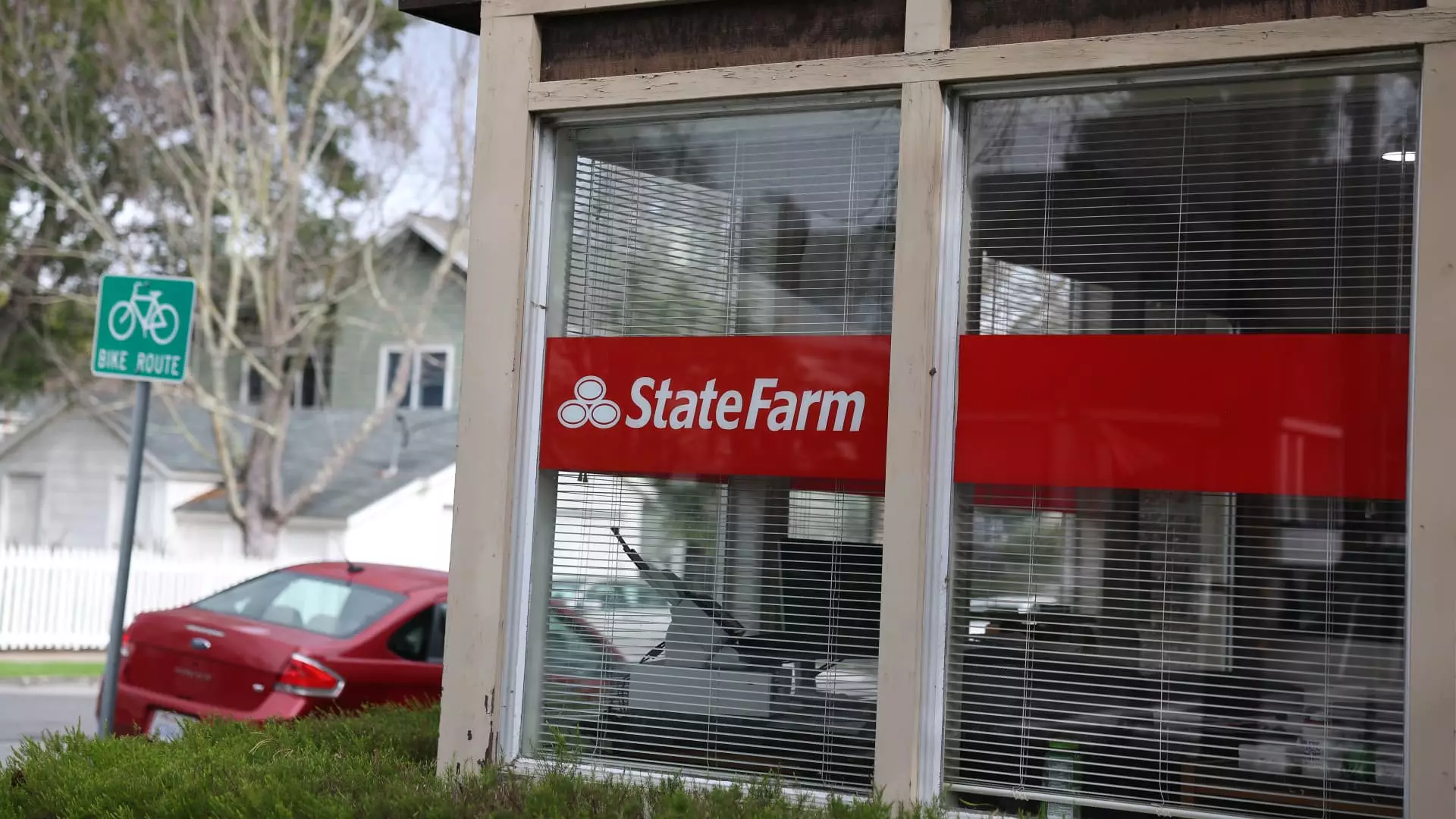The ongoing saga of State Farm’s proposed rate hikes for California homeowners is not just a financial discussion; it’s a reflection of the broader challenges facing the insurance industry in a state ravaged by natural disasters. The recent wildfires in Los Angeles, which have caused damages estimated between $250 billion and $275 billion, are symptomatic of a crisis that’s been brewing for years. State Farm’s emergency request for a 17% increase in homeowner’s insurance rates has ratcheted up tensions not just for the insurer but for millions of Californians who depend on its policies. The stakes couldn’t be higher, as these proposed rate hikes could destabilize the very foundation of insurance coverage in the state.
Amid a backdrop of extreme climate conditions, dwindling resources, and insufficient government frameworks, one must question whether California’s insurance regulators are equipped to handle the unprecedented challenges at hand. State Farm’s predicament can easily be likened to that of a ship navigating treacherous waters, but the iceberg looming ahead is not just a threat to State Farm; it’s a warning sign for every Californian holding a homeowner’s policy.
Financial Turbulence: The Inevitable Consequence of Inaction
The Financial Health Index of State Farm indicates a troubling reality: the insurer can no longer absorb the high costs associated with increasing claims. With more than 3 million policies in California, it has already paid out roughly $2.75 billion related to wildfire damages, and projections show that losses could reach up to $612 million even after reinsurance payouts. Yet, despite these severe financial strains, regulators continue to hesitate, imposing bureaucratic barriers that stifle effective solutions. If State Farm cannot secure its proposed rate hikes, it runs the risk of becoming the first casualty in a state where the insurance landscape is already on the brink of disaster.
California’s Department of Insurance and Insurance Commissioner Ricardo Lara seem caught between a rock and a hard place. On the one hand, they have a responsibility to protect consumers; on the other, they must recognize the fundamental shifts in risk assessment and financial viability that insurers face due to climate-related disasters. The push from Consumer Watchdog against the rate increases illustrates the complexity of this situation—one where the well-being of families grappling with affordability clashes with the financial realities of the companies offering them coverage.
The Unsustainability of Current Insurance Models
Experts and advocates alike have underscored the fact that current insurance models in California are increasingly unsustainable. Economist David Appel made the compelling argument that the state’s “insurer of last resort,” the FAIR plan, is overwhelmed and lacks the necessary capacity to handle the increasing number of residents who find themselves without coverage. Furthermore, insurers like State Farm opting out of new policies altogether raise red flags about the long-term viability of the market. If companies are exiting the business, what happens when the next disaster strikes? The market’s apparent instability poses a real risk for the future of homeownership in the Golden State.
The situation grows more dire as the Insurance Information Institute notes that many carriers are losing financial ground by paying out more in claims than they are recouping in premiums. This imbalance is exacerbated by a regulatory framework that has historically resisted significant rate increases, forcing companies like State Farm to either cut their coverage dramatically or risk becoming another example of corporate failure in a climate-challenged world.
A Path Forward: Embracing Realistic Solutions
While many voices are understandably cautious about granting State Farm the rate increases it seeks, the reality is that consumers and policymakers alike need to embrace more realistic solutions informed by catastrophe modeling and an understanding of the evolving risks at hand. The California Department of Insurance has introduced a “Sustainable Insurance Strategy” as a framework for insurers to assess risks more accurately. However, the actual implementation of this strategy is crucial to establishing a more stable insurance marketplace. Janet Ruiz has pointed out that this initiative represents a vital step toward correcting systemic issues that have led us to this precarious point.
Though groups like Consumer Watchdog raise valid concerns about corporate accountability, it becomes essential to weigh the implications of stifling necessary rate adjustments. As homeowners struggle to navigate potentially huge increases in their insurance premiums, it is essential to remember that the goal should not merely be limited to cheap insurance, but rather, sustainable, responsible coverage that can actually pay out when disaster strikes. A delicate balance needs to be achieved—one that recognizes the need for adequate funding to cover future risks without overburdening already stressed consumers.
In light of this complex interplay, State Farm’s fate and the financial stability of its clients hinge not just on a mere rate hike, but on redefining how we conceive of risk, affordability, and the very essence of insurance in an era marked by climate volatility. It’s an ongoing drama that prompts a necessary dialogue about the responsibilities of both insurers and regulators to adapt, innovate, and protect the interests of everyday Californians.

